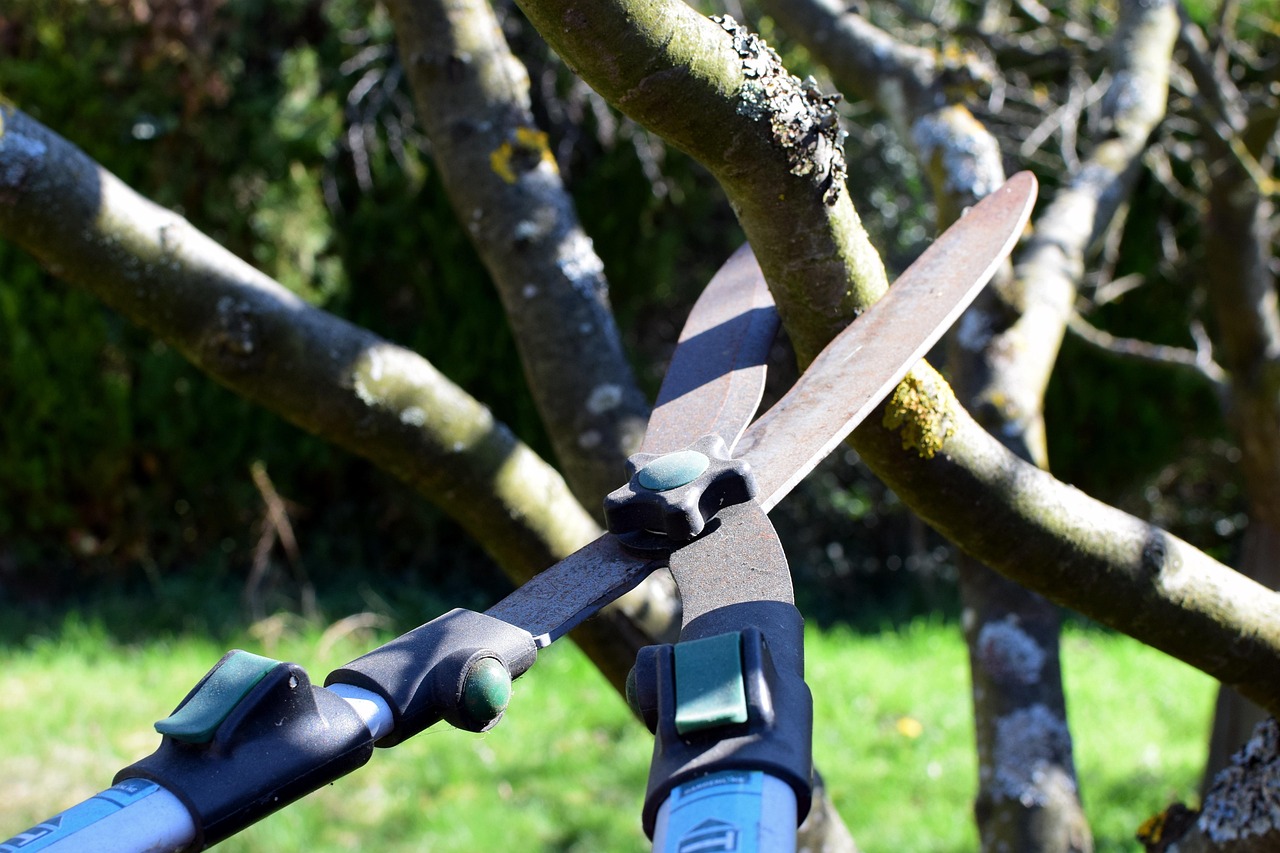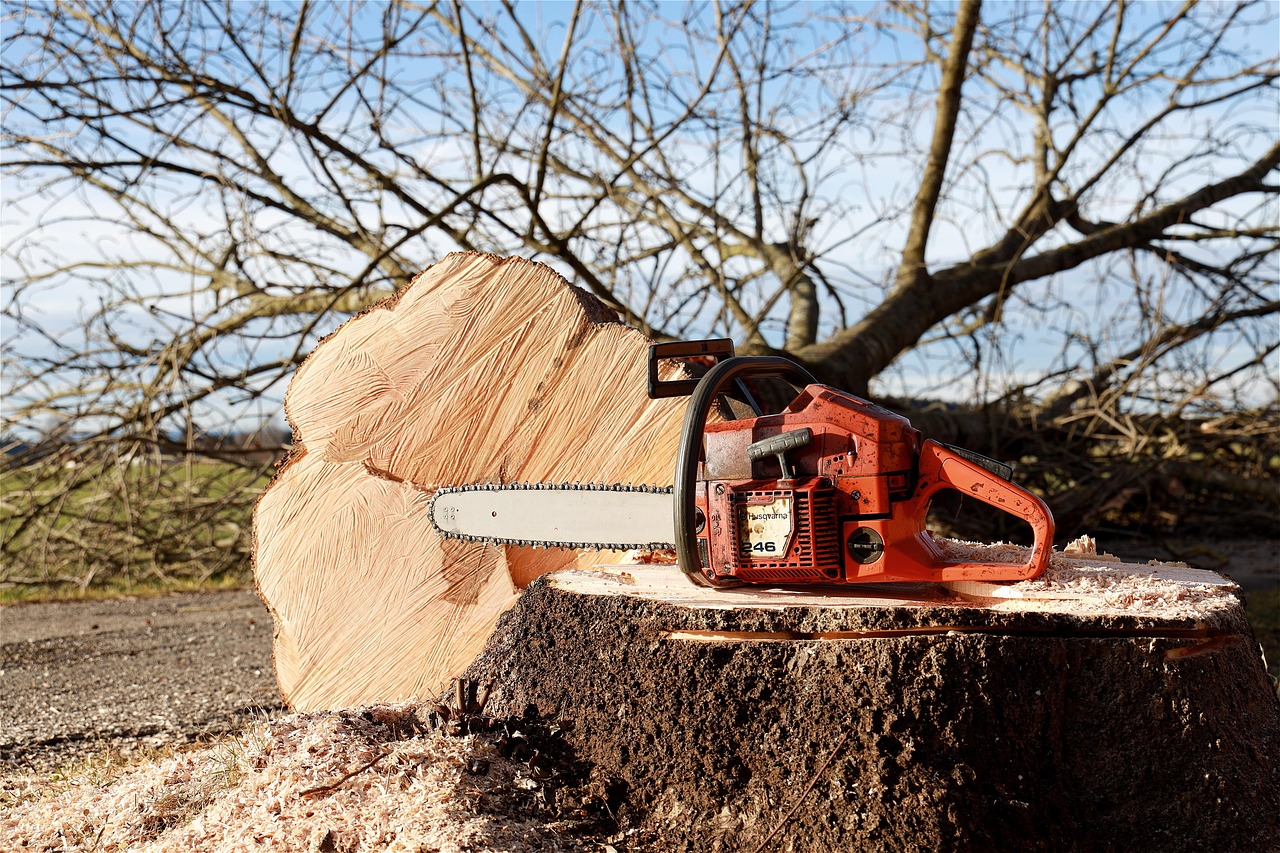Forest tree pruning is a vital practice that enhances timber yield by improving tree health, reducing competition, and promoting better growth. Proper pruning techniques can lead to higher quality timber with fewer defects.
Pruning is a key aspect of forest management. It involves the selective removal of branches to improve tree structure and health. This practice not only enhances the aesthetic appeal of forests but also plays a crucial role in timber production. By managing how trees grow, foresters can optimize the conditions for timber yield, leading to healthier forests and more profitable harvests.

There are several benefits associated with proper pruning techniques. Firstly, pruning helps to remove dead or diseased branches. This action reduces the risk of pest infestations and diseases that can spread through unhealthy trees. Secondly, it allows for improved light penetration throughout the canopy. When sunlight reaches more of the tree’s foliage, it can significantly boost photosynthesis, leading to faster growth rates.
In addition to these benefits, pruning can help in shaping the tree structure. This is particularly important for species that are commonly harvested for timber. A well-shaped tree is less likely to develop defects such as knots or splits, which can compromise the quality of the timber.
Types of Pruning Techniques
There are various pruning techniques used in forest management. Each technique serves a specific purpose and can be employed based on the desired outcome for timber yield. Below are some common types of pruning:

- Thinning: This involves removing specific branches or trees to reduce competition for resources among remaining trees.
- Cleaning: This technique focuses on removing dead, damaged, or diseased branches from a tree.
- Raising: Raising involves removing lower branches to enhance the growth of upper branches and improve access for harvesting.
- Reduction: This technique reduces the height or spread of a tree’s canopy, which can help manage growth and improve light availability.
Each of these techniques contributes differently to the overall health of the forest and the quality of timber produced. Selecting the appropriate method is essential for achieving optimal results.
Factors Influencing Pruning Decisions
Several factors influence how and when pruning should be carried out. Understanding these factors can help forest managers make informed decisions that enhance timber yield. The following are key considerations:
- Tree Species: Different tree species have varying responses to pruning. Some may require more extensive pruning than others.
- Age of Trees: Young trees typically benefit from different pruning techniques compared to mature trees.
- Site Conditions: The environment in which the trees grow, including soil quality and weather conditions, can affect pruning outcomes.
- Management Goals: The specific objectives for timber production will guide pruning practices.
A comprehensive understanding of these factors allows foresters to tailor their pruning strategies to maximize timber yield while maintaining forest health.

The Role of Timing in Pruning
Timing is crucial when it comes to pruning. The best time to prune trees varies depending on the species and local climate. Generally, late winter or early spring is considered ideal for many species. During this period, trees are still dormant, and pruning can lead to vigorous growth when the growing season begins.
Pruning during the wrong season can stress trees or expose them to pests and diseases. For example, pruning in late summer may leave fresh cuts vulnerable to infections. Thus, careful attention must be paid to timing to ensure successful outcomes.
Pruning Tools and Equipment
The right tools are essential for effective pruning. Using appropriate equipment not only makes the process easier but also ensures cleaner cuts that promote quicker healing for trees. Common tools include:

- Hand Pruners: Ideal for small branches and detailed work.
- Loppers: Suitable for medium-sized branches that require more leverage.
- Saws: Necessary for larger branches or whole limbs.
- Chainsaws: Used for heavy-duty pruning in larger forestry operations.
Maintaining these tools is also important. Sharp blades make cleaner cuts, which reduces damage to the trees and promotes faster healing.
The Importance of Professional Guidance
While some landowners may attempt pruning on their own, involving professionals can lead to better results. Certified arborists or forestry experts have the knowledge and experience necessary to implement effective pruning techniques. They can assess individual trees and forests, making informed recommendations based on specific conditions.
This professional guidance ensures that forest management practices align with best practices for sustainability and timber production. Working with experts may also help landowners avoid common pitfalls that can undermine their efforts.
Understanding Growth Stages of Trees
To implement effective pruning strategies, it is essential to understand the growth stages of trees. Each stage requires specific pruning techniques to promote optimal timber yield. Typically, trees can be categorized into three main growth stages: juvenile, mature, and senescent.
Juvenile Stage
The juvenile stage is characterized by rapid growth. During this period, trees focus on developing their structure and height. Pruning in this stage is essential for guiding growth. Key practices include:
- Formative Pruning: This involves shaping young trees to encourage a strong central leader and well-distributed branches.
- Thinning: Removing competing branches helps ensure that the tree’s energy is directed towards developing a solid framework.
Proper pruning during the juvenile stage sets the foundation for a healthy tree. It reduces the likelihood of defects in the future.
Mature Stage
In the mature stage, trees reach their full height and begin to produce timber. Pruning at this stage focuses on maintaining health and enhancing quality. Important practices include:
- Cleaning: Removing dead or diseased branches ensures the tree remains healthy.
- Thinning: This technique reduces competition among branches, allowing better light penetration and air circulation.
These practices are critical to maintaining vigor and maximizing timber quality.
Senescent Stage
The senescent stage marks the decline of tree vitality. Pruning in this phase aims to extend the tree’s life and improve timber yield. Techniques include:
- Selective Removal: Cutting back on older, less productive branches can redirect energy to healthier parts of the tree.
- Structural Pruning: This involves removing branches that may pose risks of falling or breaking.
Pruning during the senescent stage requires careful consideration to avoid over-stressing the tree.
The Impact of Environmental Factors
Environmental factors significantly influence tree growth and, consequently, the effectiveness of pruning strategies. Understanding these factors is vital for successful forest management. Key environmental aspects include:
- Soil Quality: Nutrient-rich soil promotes healthy growth. Pruning should be adjusted based on soil conditions.
- Climate: Temperature and precipitation patterns affect tree health. Trees in areas with harsh climates may require different pruning techniques.
- Pests and Diseases: Identifying common pests and diseases in the area can inform pruning strategies to minimize their impact.
Monitoring these factors ensures that pruning practices align with the current environmental conditions, promoting healthier forests.
Pruning for Specific Timber Species
Different tree species respond uniquely to pruning. Understanding these differences is crucial for maximizing timber yield. Below are some commonly pruned timber species and their specific pruning needs:
| Tree Species | Pruning Needs | Optimal Timing |
|---|---|---|
| Pine | Thinning and cleaning; focus on removing lower branches. | Late winter or early spring. |
| Oak | Formative pruning; maintain a strong shape. | Early spring before leaf-out. |
| Maple | Thinning to improve canopy health; remove deadwood. | End of winter until early spring. |
| Cedar | Light thinning; avoid excessive cuts to prevent stress. | Late spring after new growth appears. |
This table highlights the importance of tailoring pruning strategies according to species-specific requirements. Proper timing and technique can lead to improved health and higher quality timber production.
The Economic Benefits of Pruning
The economic implications of effective pruning extend beyond immediate timber yields. By investing time and resources into proper pruning techniques, landowners can experience long-term financial benefits. Some key economic advantages include:
- Increased Timber Value: Well-pruned trees yield higher quality wood, which can command better prices in the market.
- Reduced Costs: Healthy trees are less prone to disease and pest infestations, leading to lower management costs over time.
- Sustainable Practices: Pruning contributes to sustainable forest management, ensuring ongoing profitability from timber resources.
A well-planned pruning strategy not only boosts immediate yield but also enhances the long-term viability of forestry operations.
Community and Ecological Considerations
Apart from economic benefits, pruning also plays a role in community and ecological health. Forests provide vital resources for local communities, including recreation, clean air, and wildlife habitat. Pruning helps maintain not just timber yield but also biodiversity and ecosystem resilience.
Sustainable forest management practices, which include thoughtful pruning, contribute positively to community well-being by preserving natural landscapes and supporting local economies reliant on forestry resources.
This multifaceted approach ensures that both timber yield and ecological integrity are maintained, creating a balance that supports both human and environmental needs.
Best Practices for Forest Tree Pruning
Implementing effective pruning strategies requires adherence to best practices tailored towards maximizing timber yield and maintaining tree health. These practices encompass various aspects, including planning, execution, and post-pruning care.
Planning for Pruning
Before starting the pruning process, thorough planning is essential. This stage involves assessing the forest and identifying specific goals. Key planning steps include:
- Conducting a Tree Inventory: Identify species, age, and health status of trees in the area. This information helps tailor pruning strategies.
- Setting Objectives: Define clear goals for pruning, such as improving timber quality, enhancing forest aesthetics, or promoting biodiversity.
- Creating a Schedule: Establish a timeline for pruning activities based on the specific needs of different tree species and growth stages.
A well-thought-out plan lays the foundation for successful pruning and ensures that efforts align with overall forest management goals.
Executing Pruning Techniques
Proper execution of pruning techniques is vital for achieving desired outcomes. Following recommended practices can significantly enhance the effectiveness of pruning:
- Make Clean Cuts: Use sharp tools to ensure clean cuts that minimize damage to the tree. Avoid tearing or crushing the bark.
- Follow Natural Growth Patterns: Prune in a way that complements the natural shape of the tree. This reduces stress and promotes healthy growth.
- Avoid Over-Pruning: Remove no more than 20-30% of a tree’s foliage at one time. Over-pruning can weaken trees and lead to poor health.
These execution strategies help maintain the structural integrity of trees while encouraging vigorous growth.
Post-Pruning Care
After pruning, providing care to the trees is essential for recovery and growth. Essential post-pruning practices include:
- Monitoring Tree Health: Regularly check pruned trees for signs of stress or disease. Early detection can mitigate potential issues.
- Watering: Ensure that trees receive adequate water, especially during dry periods, to support recovery and promote new growth.
- Nutrient Management: Consider applying fertilizers if soil tests indicate deficiencies. Proper nutrition supports healthy regrowth.
Implementing these care practices helps trees recover from pruning stress and encourages robust growth moving forward.
Common Mistakes to Avoid in Pruning
While knowledge of proper pruning techniques is essential, avoiding common mistakes can greatly enhance outcomes. Some frequent pitfalls include:
- Ignoring Species-Specific Needs: Different species have unique requirements. Failing to consider these can lead to ineffective or harmful pruning.
- Pruning at the Wrong Time: Timing is crucial. Pruning out of season can expose trees to stress or pests.
- Lack of Proper Tools: Using dull or inappropriate tools can damage trees and lead to improper cuts.
Avoiding these mistakes ensures that pruning efforts yield positive results in terms of tree health and timber production.
The Role of Technology in Pruning
Advancements in technology have revolutionized forest management practices, including tree pruning. Several tools and techniques enhance efficiency and effectiveness in pruning operations:
Drones in Tree Assessment
Drones equipped with cameras can be utilized for aerial surveys of forests. They provide valuable insights into tree health and growth patterns. This data can inform pruning decisions by identifying areas needing attention or specific trees requiring intervention.
GIS Mapping
Geographic Information Systems (GIS) allow forest managers to create detailed maps of forested areas. These maps can help track tree inventory, assess growth rates, and plan pruning activities more effectively.
Automated Pruning Tools
The development of automated pruning machines has made large-scale operations more efficient. These tools can perform precise cuts while reducing labor costs and minimizing human error.
The integration of technology into pruning practices not only enhances efficiency but also improves the overall effectiveness of forest management strategies.
Case Studies in Successful Pruning Practices
Learning from real-world examples can provide valuable insights into effective pruning strategies. Several case studies illustrate successful approaches to forest tree pruning for improved timber yield:
| Case Study | Description | Outcomes |
|---|---|---|
| Pine Forest Management in Oregon | This project focused on thinning overcrowded stands to improve growth rates. | A 30% increase in timber yield over five years was recorded. |
| Sustainable Oak Pruning in New York | A community initiative aimed at restoring oak forests through selective pruning. | Improved tree health and increased biodiversity were noted within the ecosystem. |
| Cedar Reforestation in Washington | This project involved systematic pruning to shape young cedar trees for timber production. | The initiative resulted in higher quality wood with fewer defects at harvest time. |
These case studies highlight the tangible benefits derived from implementing effective pruning techniques tailored to specific conditions and goals.
The Future of Forest Tree Pruning
The field of forest management continues to evolve, influenced by changing ecological conditions, technological advancements, and shifting market demands. Future trends in tree pruning may focus on:
- Sustainability Practices: Increased emphasis on sustainable methods will shape how forests are managed and pruned.
- Enhanced Data Utilization: Leveraging big data and analytics will help inform better decision-making in forest management.
- Community Engagement: More community-driven initiatives may arise, promoting local involvement in forest stewardship and management practices.
The future of forest tree pruning looks promising, with advancements that will likely enhance timber yield while maintaining ecological integrity.
Emerging Trends in Forest Tree Pruning
As the field of forest management evolves, new trends are emerging that aim to enhance the efficiency and effectiveness of tree pruning practices. Understanding these trends can help landowners and forest managers adopt innovative approaches that align with contemporary practices.
Integration of Precision Forestry
Precision forestry is an approach that utilizes technology to optimize forest management practices. This method includes the use of remote sensing, geographic information systems (GIS), and data analytics to make informed decisions about pruning. By identifying individual tree health and growth patterns, foresters can tailor their pruning strategies for maximum impact.
For example, drones equipped with sensors can analyze tree canopy density and health. This data allows forest managers to pinpoint specific trees that require pruning, reducing unnecessary cuts and focusing resources where they are most needed.
Focus on Climate Resilience
With climate change posing significant challenges to forests, future pruning practices will likely prioritize climate resilience. This involves selecting and maintaining tree species that are better adapted to changing environmental conditions. Pruning will be used strategically to promote genetic diversity and support species that can withstand stressors such as drought or disease.
By enhancing the resilience of forests through thoughtful pruning, landowners can ensure the sustainability of timber resources while supporting overall forest health.
Collaborative Approaches to Forest Management
Collaboration among various stakeholders is becoming increasingly important in forest management. Local communities, government agencies, and private landowners are recognizing the value of working together to manage forest resources. Collaborative approaches can lead to more effective pruning strategies that consider ecological, economic, and social factors.
Community involvement in pruning practices not only fosters a sense of stewardship but also ensures that local knowledge and concerns are integrated into management plans. This holistic approach can lead to more sustainable outcomes for both timber yield and ecosystem health.
Regulatory Considerations in Pruning Practices
As awareness of sustainable forestry practices grows, regulatory frameworks are evolving to support responsible tree pruning and management. Understanding these regulations is crucial for landowners and forestry professionals.
- Permitting Requirements: Some regions may require permits for certain types of pruning, especially if they involve significant alterations to tree structure or habitat.
- Environmental Protection Laws: Regulations aimed at protecting endangered species or critical habitats may impose restrictions on pruning activities in specific areas.
- Sustainable Forestry Certifications: Many landowners seek certification from organizations such as the Forest Stewardship Council (FSC) or the Sustainable Forestry Initiative (SFI). These certifications often have specific guidelines regarding tree management and pruning practices.
Staying informed about these regulations helps ensure compliance while promoting sustainable forestry practices.
Final Thoughts
The practice of forest tree pruning plays a crucial role in enhancing timber yield while maintaining ecological balance. Through careful planning, execution, and post-pruning care, landowners can optimize their forestry operations. Understanding the growth stages of trees, environmental factors, and species-specific needs is essential for effective pruning strategies.
The future of forest tree pruning holds promise with advancements in technology and a growing emphasis on sustainability. As precision forestry techniques become more prevalent and climate resilience becomes a priority, pruning practices will continue to evolve. Collaborative approaches involving communities and stakeholders will further enhance forest management efforts.
Ultimately, by integrating best practices and staying informed about emerging trends, landowners can contribute to healthier forests and improved timber yields. Responsible forest management not only benefits individual landowners but also supports wider ecological health and community well-being.
In conclusion, effective forest tree pruning is a dynamic practice that requires ongoing learning and adaptation. By embracing innovation and sustainable methods, the forestry sector can look forward to a productive future that balances economic needs with ecological integrity.
